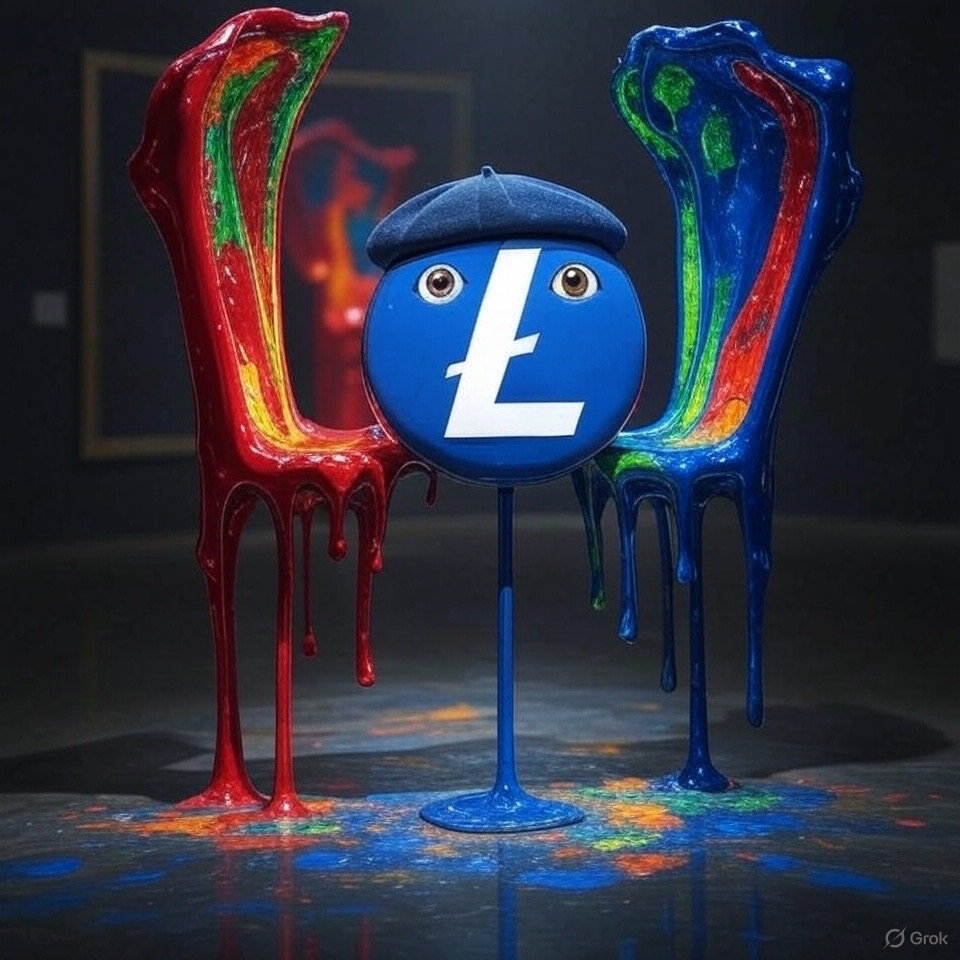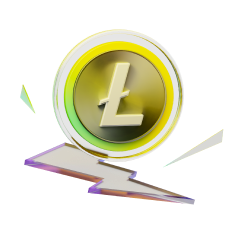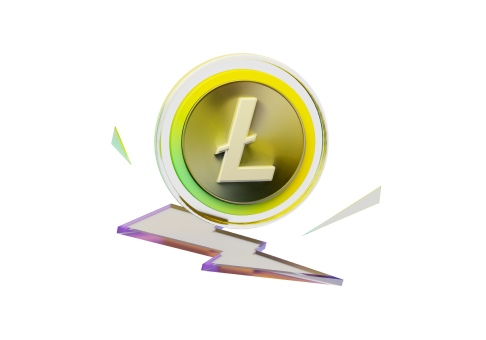What Makes Litecoin Different From Bitcoin
Litecoin launched in October 2011 as one of the first alternatives to Bitcoin. Charlie Lee, a former Google employee, created it to solve Bitcoin's early scalability problems. The project uses Bitcoin's core code but makes key changes to improve transaction speed and costs.
People often call Litecoin the "silver to Bitcoin's gold." This comparison captures how the two cryptocurrencies work together rather than compete. Bitcoin serves as a long-term store of value. Litecoin handles everyday transactions with faster confirmations and lower fees. Both use proof-of-work mining, but Litecoin processes blocks in 2.5 minutes instead of Bitcoin's 10 minutes.
The maximum supply of Litecoin is 84 million coins, which is four times Bitcoin's 21 million limit. This larger supply supports Litecoin's role as a payment method. The network uses the Scrypt hashing algorithm instead of Bitcoin's SHA-256. Early developers chose Scrypt to make mining more accessible to regular users with standard computer hardware.
Review LTC Price on LBank
Prezzo LTC()
Il prezzo attuale di LTC() è $0, con una variazione di % nelle ultime 24 ore e una variazione di % nel periodo di Ultimi sei mesi. Per maggiori dettagli, controlla subito il prezzo di LTC .
The Story Behind Litecoin's Creation
Litecoin's origin story starts with concerns about Bitcoin mining becoming too centralized. By 2011, powerful GPU miners dominated Bitcoin mining. This created high barriers for new participants. A cryptocurrency called Tenebrix tried to solve this problem using the Scrypt algorithm. Scrypt was designed to resist specialized mining hardware like ASICs.
Tenebrix failed because its developers pre-mined 7.7 million coins for themselves. Charlie Lee saw this flaw and created Fairbrix as a fairer alternative. Fairbrix used Scrypt but removed the pre-mining problem. Lee then built Litecoin by combining Fairbrix's Scrypt algorithm with Bitcoin's limited supply model.
The Litecoin network officially went live on October 13, 2011. Lee released the open-source client on GitHub on October 7, just six days earlier. This launch established Litecoin as one of the earliest altcoins in the cryptocurrency market.
Key Milestones in Litecoin's Development
Early Growth
Litecoin gains traction, explodes in Nov 2013 with 100% gain in 24h
Merge-Mining with Doge
Dogecoin begins merge-mining with Litecoin (Miner can secure both)
Market Peak & Lee's Sale
LTC becomes 3rd largest crypto by market cap; Charlie Lee sells his holdings, sparking controversy
Walmart Hoax
Fake Walmart partnership causes 30% price spike
MWEB Activation
MimbleWimble Extension Blocks (MWEB) go live for optional privacy
ETF Filing & Institutional Moves
In 2024, a Canary Capital S-1 filed for LTC ETF.
How Litecoin's Technical Features Work
Litecoin operates as a decentralized peer-to-peer payment network. The blockchain records all transactions permanently and transparently. Miners validate new transactions and add them to the blockchain every 2.5 minutes.
The Scrypt proof-of-work algorithm secures the network. This algorithm was originally designed to be memory-intensive, which made it resistant to ASIC mining in the early years. However, companies eventually developed Scrypt-specific ASIC miners. Today, profitable Litecoin mining requires specialized hardware.
Block rewards decrease through a halving mechanism every 840,000 blocks. The initial reward was 50 LTC per block. As of 2025, miners receive 6.25 LTC per block. This halving schedule controls the supply inflation rate and mimics Bitcoin's economic model.
Segregated Witness and Lightning Network
Litecoin has served as a testing ground for Bitcoin technologies. The network activated Segregated Witness (SegWit) before Bitcoin did. SegWit increases block capacity by separating signature data from transaction data. This change allows more transactions per block.
The Lightning Network integration enables near-instant transactions. This second-layer solution moves small transactions off the main blockchain. Users can open payment channels and settle multiple transactions with minimal fees. The Lightning Network makes Litecoin practical for micropayments.
MWEB Privacy Technology
The Mimblewimble Extension Blocks upgrade represents Litecoin's most significant recent development. MWEB creates a separate area within blocks where users can conduct private transactions. The technology uses confidential transactions and CoinJoin to hide amounts and improve fungibility.
Users can move coins between regular Litecoin addresses and MWEB addresses. This opt-in approach balances privacy with regulatory compliance. Transparent transactions remain the default, but privacy-conscious users have strong protection when needed.
Litecoin Compared to Other Cryptocurrencies

Litecoin's relationship with Dogecoin deserves special attention. Both cryptocurrencies use the Scrypt algorithm and prioritize fast, cheap transactions. Merge-mining connects their networks at the protocol level. Miners secure both blockchains with the same computational work. Litecoin maintains a more serious development focus while Dogecoin thrives on community enthusiasm.
XRP offers a different approach to fast payments. Ripple's network uses a consensus protocol instead of mining. Large financial institutions favor XRP for cross-border settlements. Litecoin remains more decentralized and better suited for peer-to-peer transactions without intermediaries.
Ethereum's smart contract platform opens possibilities Litecoin doesn't pursue. Developers can build decentralized applications and complex financial instruments on Ethereum. Litecoin focuses on being a reliable, efficient payment system. This simplicity gives Litecoin advantages in transaction speed and predictability for its specific use case.
Current Market Position and Adoption
As of September 2025, Litecoin trades at $104.18 with 76,352,164 LTC in circulation. The cryptocurrency reached an all-time high above $300 during previous bull markets. Price volatility remains a factor, but Litecoin has maintained relevance longer than most altcoins from its era.
Real-world adoption shows Litecoin's practical value. BitPay reports that Litecoin is the most commonly used cryptocurrency on its payment platform. This usage data demonstrates that people actually spend Litecoin rather than just holding it as an investment. Major exchanges like LBank listed Litecoin, which provides easy access for buyers.
PayPal added support for Litecoin derivatives in 2020. This integration brought Litecoin to millions of mainstream users. The PayPal implementation uses custodial accounts rather than direct blockchain transactions, but it still increases awareness and accessibility.
Mining remains accessible despite increased difficulty. Individual miners can still participate profitably with the right equipment. The merge-mining arrangement with Dogecoin adds extra incentive for miners. This shared security model strengthens both networks.
Staking and Earning Opportunities
Direct staking is not possible on Litecoin because it uses proof-of-work mining. Proof-of-stake networks allow coin holders to earn rewards by locking tokens. Litecoin's architecture doesn't support this mechanism. Miners earn rewards by providing computational power, not by holding coins.
Third-party DeFi platforms offer alternatives for earning yield on LTC holdings. Lending and borrowing services allow users to lend their Litecoin and receive interest payments. These platforms pool user funds and loan them to borrowers. The interest rates vary based on market demand.
These lending services carry risks that users should understand. The platforms operate as centralized intermediaries. Users must trust the platform's security and solvency. Litecoin held on lending platforms doesn't provide the same security as coins stored in a personal wallet. Each user needs to evaluate whether the interest earned justifies the additional risk.
Review BTC Price on LBank
Prezzo BTC()
Il prezzo attuale di BTC() è $0, con una variazione di % nelle ultime 24 ore e una variazione di % nel periodo di Ultimi sei mesi. Per maggiori dettagli, controlla subito il prezzo di BTC .
The ETF Application Race
The SEC approved multiple spot Bitcoin ETFs in 2024. This decision opened the door for ETF applications covering other cryptocurrencies. Financial firms quickly filed applications for Litecoin, Solana, and XRP ETFs. These products would allow investors to gain crypto exposure through traditional brokerage accounts.
Canary Capital filed one notable Litecoin ETF application. The SEC set an October 2 deadline for its decision. The regulatory agency recently asked exchanges to refile applications under new General Listing Standards. Market observers interpret this procedural step as a positive signal. It suggests the SEC is preparing to approve new crypto ETF products.
The approval process requires extensive documentation and compliance reviews. ETF issuers must demonstrate robust custody solutions and market surveillance mechanisms. The SEC evaluates whether adequate liquidity exists to prevent price manipulation. Previous Bitcoin ETF approvals took years of back-and-forth between issuers and regulators.

Image by: @litecoin/Grok
How Government Shutdowns Affect Crypto Regulation
A potential US government shutdown threatens the ETF approval timeline. Government shutdowns furlough most federal employees, including SEC staff. Only workers handling "essential" functions remain on duty. The definition of essential business creates uncertainty for pending regulatory decisions.
Past government shutdowns paused similar review processes. The SEC operates with a skeleton crew during shutdowns. Reviews of complex financial products typically stop until normal operations resume. This pattern raises concerns about October decision deadlines getting missed.
Issuers and exchanges face growing anxiety about regulatory delays. A shutdown could push approvals into 2025 or later. Some analysts speculate the SEC may have completed most paperwork already. This scenario could allow approvals to proceed even during a shutdown. However, this possibility remains uncertain without official confirmation.
The political nature of government shutdowns adds unpredictability to crypto regulation. Budget disputes between lawmakers have little connection to crypto markets. Yet these political conflicts directly impact when and how crypto financial products can launch. This situation highlights how traditional political systems still control crypto industry development.
Why Litecoin Remains Relevant Today
Litecoin has survived longer than most cryptocurrencies from its generation. Many altcoins from 2011-2013 no longer exist or have minimal activity. Litecoin maintains active development, strong network security, and real transaction volume. This longevity demonstrates genuine utility beyond speculative interest.
The "digital silver" positioning gives Litecoin a clear identity in a crowded market. Newer cryptocurrencies often compete directly with each other for the same use cases. Litecoin's complementary relationship with Bitcoin creates a sustainable niche. Users who need faster, cheaper transactions than Bitcoin provides naturally consider Litecoin.
Technological innovation continues through upgrades like MWEB. The development team doesn't chase every new trend in crypto. Instead, they focus on improving Litecoin's core function as a payment system. This steady approach appeals to users who value reliability over experimentation.
Network effects from early adoption provide advantages that newcomers struggle to match. Litecoin's established presence on exchanges and payment platforms creates convenience. Merchants who accept crypto often include Litecoin alongside Bitcoin. This existing infrastructure gives Litecoin staying power even as newer projects offer advanced features.
Looking at Litecoin's Future Path
The ETF approval process represents a major test for Litecoin's mainstream acceptance. A spot Litecoin ETF would bring institutional investment and increased liquidity. Traditional investors could add Litecoin exposure without managing private keys or using crypto exchanges. This accessibility could drive significant price appreciation and adoption.
Regulatory clarity remains a key factor for long-term success. The SEC's decisions on ETFs will signal how US regulators view established cryptocurrencies like Litecoin. Favorable treatment could encourage more financial products and services. Continued regulatory uncertainty or hostile actions would limit growth potential.
Competition from newer payment-focused cryptocurrencies intensifies each year. Projects with faster block times and lower fees challenge Litecoin's value proposition. However, many of these competitors lack Litecoin's proven track record and decentralization. The balance between innovation and reliability will determine whether Litecoin maintains its market position.
The broader adoption of cryptocurrency for actual payments versus speculation will impact Litecoin's trajectory. If crypto evolves primarily as an investment asset class, Bitcoin and Ethereum may dominate. If peer-to-peer payments become a major use case, Litecoin's design advantages become more valuable. Charlie Lee's original vision of complementing Bitcoin depends on this outcome.

